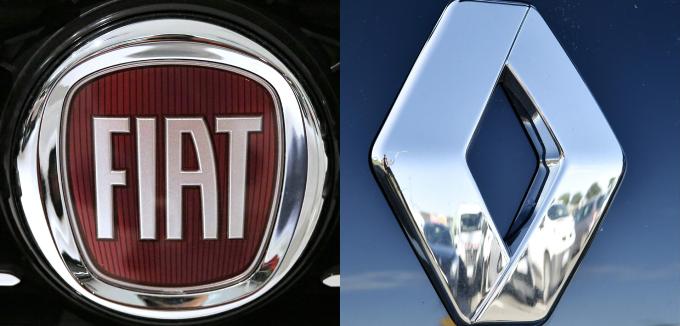MARCO BERTORELLO and LOIC VENANCE / AFP
FiatChrysler and Renault: Cooperations, not mega alliances are the way to the future
The change in the automotive world is in full swing. A new race among manufacturers and newcomers has long since begun. However, in the emerging digital and environmentally conscious world, a successful brand no longer needs the strongest engine or the sportiest design. Rather, in the future, it will be more environmentally-friendly, autonomous driving, useful driver assistance systems, car connectivity, infotainment and mobile availability without buying pressure.
To the author

Atreus
Stefan Randak is director and head of the automotive practice group at interim management provider Atreus in Munich.
This complete reorientation requires both manufacturers and suppliers to make enormous efforts in the form of capital (investments in new technologies), personnel (other skilled workers needed), and organization (flatter hierarchies and agile working methods). Electromobility is just one aspect. Those who want to fully achieve the “5 levels of autonomous driving”, who want to develop the vehicle into a mobile mobile phone and at the same time do not want to fall into the pitfalls of a lack of “cyber security” still have to invest significantly more. The view of helping hands on the edge of the pool is therefore obvious.
Time of the mega-fusions is over
But classic mega-fusions in response to this are the wrong path, Their imponderables are hard to control and a possible colossus like Fiat Chrysler Show stock market chart and Renault Show stock market chart will fail. Examples of lesser significance already ended in failure: The “wedding in heaven” between Daimler and Chrysler almost brought Daimler down. Even the merger between BMW and Rover was not successful from the beginning and ended in a smash.
Cooperations among equals are the way to the future. Here are joint investments (eg in the navigation), the bundling of knowledge (eg in the electric mobility), the creation of common production capacities (eg in the battery cell production), the use of common production sites (eg in the construction of common products), the cooperation in the Sales (eg in the development of new markets) and the bundling of market power (eg in cooperation in purchasing) in the foreground. A good example of this is the joint takeover of the map service “Here” in 2015 by Daimler, BMW and Audi or the cooperation between Volkswagen and Ford in pick-up production that became known at the beginning of the year. The advantages are apparent:
1. The focus on currently important individual topics
2. The bundling of manageable capital as well as personnel and knowledge on time
3. The achievement of economies of scale in manageable periods
4. The structuring / restructuring effort is manageable and manageable.
Fiat Chrysler under pressure
If we look at Fiat Chrysler, it is striking that this is no longer an Italian concern. The company was formed in 2014 through the acquisition of Chrysler, has its legal seat in Amsterdam and the operational headquarters in London. Business has been unsatisfactory for years. It is also known that the Group overslept electromobility in particular. Investors in the stock exchange have held back for years. The share price lurches for 5 years between at least 5 and a maximum of 20 euros. In the spring of 2019, earnings at Group level slumped again by one third compared to the previous year.
So Fiat Chrysler has to act now. “The Group is open to partnerships,” Mike Manley recently shared publicly in the presentation of the 2018 numbers. His initiative is now on the table: a merger of Fiat Chrysler with Renault would create behind Volkswagen and Toyota, the third largest automaker in the world with a sales volume of 8.7 million vehicles. If Nissan and Mitsubishi also enter, with more than 15 million vehicles even the largest automaker ever.
Page 1 of 2

